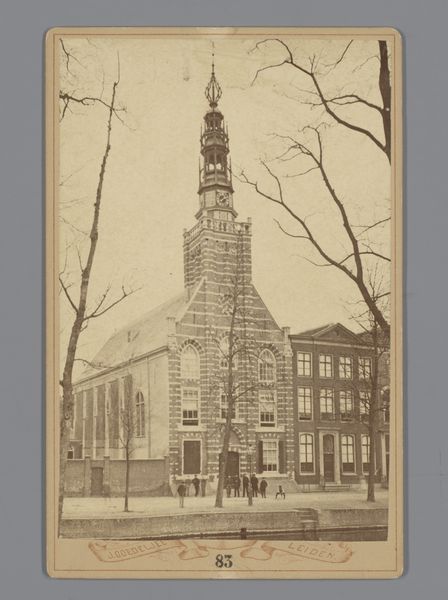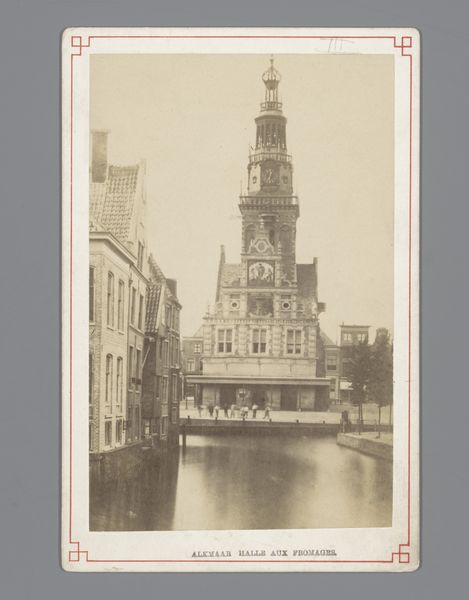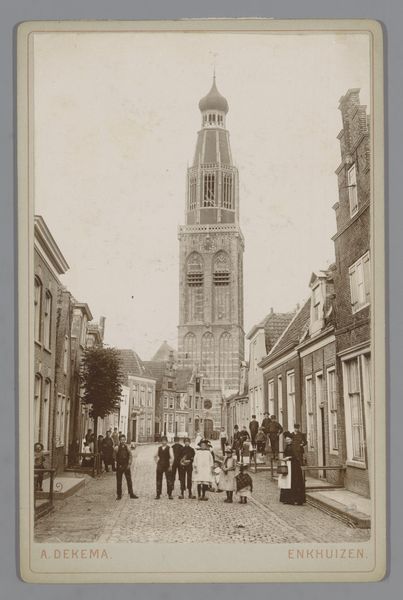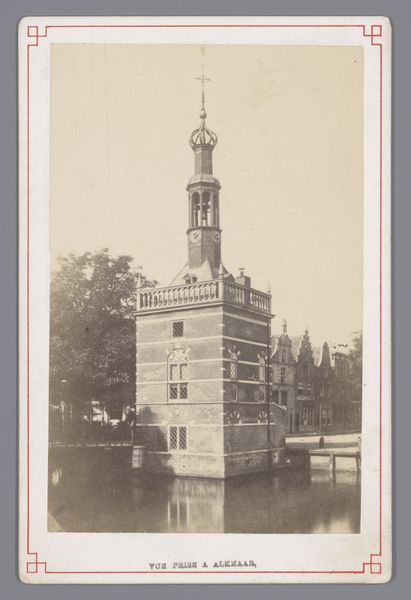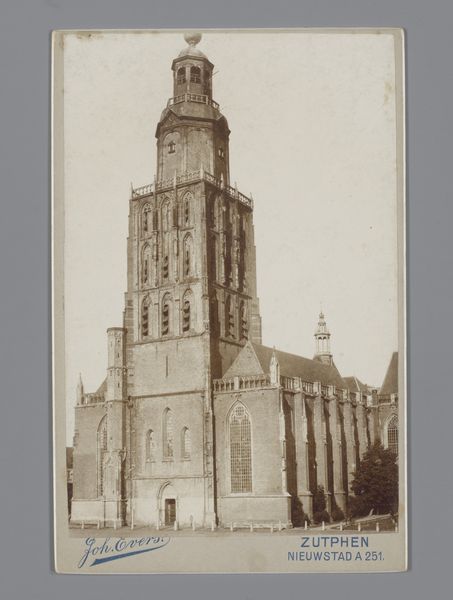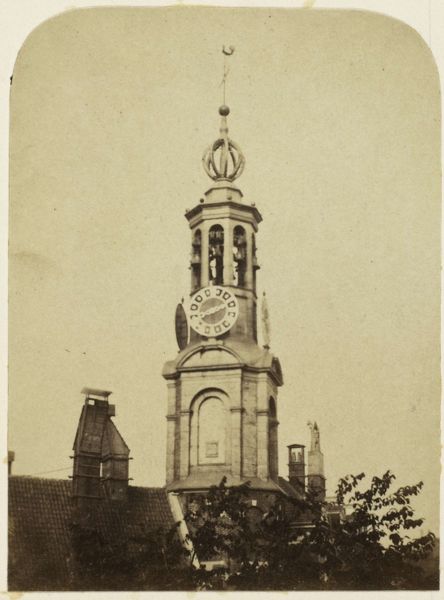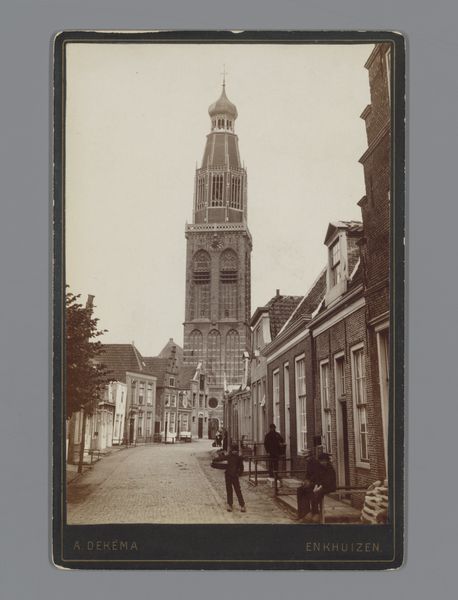
Gezicht op de Vismarkt met de toren van het stadhuis te Leiden 1880 - 1910
0:00
0:00
rommlerjonas
Rijksmuseum
photography, gelatin-silver-print
#
dutch-golden-age
#
photography
#
gelatin-silver-print
#
cityscape
#
realism
Dimensions: height 105 mm, width 155 mm
Copyright: Rijks Museum: Open Domain
Curator: Ah, look at this evocative image. It's a gelatin silver print from somewhere between 1880 and 1910, titled "Gezicht op de Vismarkt met de toren van het stadhuis te Leiden"—or "View of the Fish Market with the Tower of Leiden City Hall." The photographers were Römmler & Jonas. Editor: Wow, there's a wistful, nostalgic feel, like stepping back into a dream. The high tower dominates the frame; it almost feels as though it's watching over the little figures gathered below on what must be a busy market day. Curator: Absolutely, and understanding the context, we see Leiden as a thriving center for trade and civic life at the turn of the century. This cityscape encapsulates the values of the Dutch Golden Age—a period of prosperity rooted in commerce, though here filtered through the lens of late 19th-century realism. Think about the relationship between the tower, a symbol of authority and structure, and the dynamic bustle of the fish market, reflecting everyday life and labor. Editor: It makes me wonder, too, about the people captured here. They seem paused in time, like ghosts, each with their own story. I can almost smell the fish, the wet stone, hear the shouts and haggling. The photograph captures such a sensory experience beyond just the visual! Curator: And note how Römmler & Jonas chose to capture Leiden. It's not a glorification. The tones are muted; the light realistic rather than dramatic. This aligns with the period’s social consciousness, mirroring artistic movements that began portraying society with increasing accuracy and less idealization. It pushes us to consider what it meant to document urban life in an era undergoing such massive industrial and social change. Editor: I agree, it prompts thoughts about those forgotten ordinary experiences, doesn't it? In the tower’s shadow, life unfolded, made up of daily trades, tiny exchanges, hopes and realities. Maybe that is its power; the image immortalizes what is ephemeral and mundane. Curator: Precisely. When we look at photographs such as this, we're not just observing history but contemplating how power, daily life, and art are inextricably connected. It invites reflection on how these factors continue to evolve our shared human experience, whether in the Netherlands or around the world. Editor: You are right, it encourages a new perspective! The image leaves me not just informed but strangely touched—an effect any good artwork ought to accomplish.
Comments
No comments
Be the first to comment and join the conversation on the ultimate creative platform.

